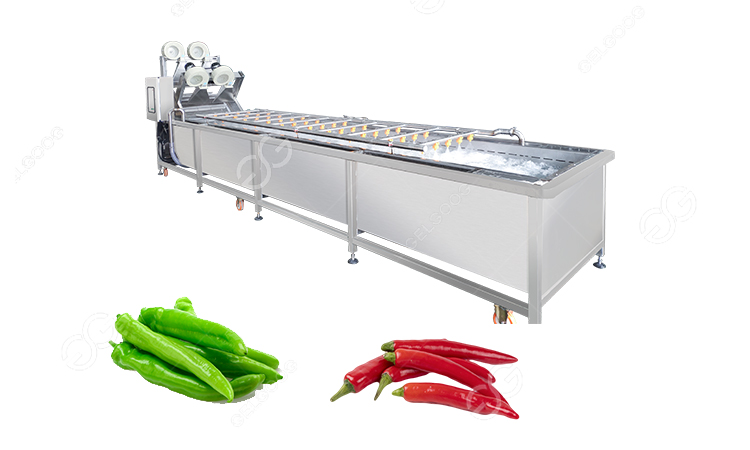In the chili pepper sauce production process, washing pepper is a crucial step, which directly affects the quality and safety of the final product. The washing process not only removes dirt, pesticide residues and other impurities on the surface of the chili, but also reduces the presence of microorganisms and improves the hygiene standards of the chili sauce. But how to clean fresh picked peppers in factory? The following are several chili washing methods commonly used by factories and their processes.
Initial selection and pre-processing
Before the peppers enter the cleaning facility, the plant usually performs an initial selection and pre-treatment. This step consists mainly of the following:
- Manual selection: removing rotten, broken or poor quality peppers.
- De-stemming: removes stems and other unwanted parts of the chili to minimize hindrance during washing.
- Rough washing: Using a water stream or spraying device, initially removes soil and large particles of impurities from the surface of the peppers
Water cleaning system
Water cleaning is an efficient cleaning method commonly used in factories. Its main processes are as follows:
- Tank Soaking: The peppers are soaked in a tank filled with fresh water. The soaking time depends on how dirty the peppers are, and this process softens and dislodges the soil that adheres to the surface of the peppers.
- Air Bubble Cleaning Machine: After soaking, the peppers are fed into an air bubble cleaner. The bubble washing machine generates a large number of bubbles in the water, forming a strong water flow and bubble movement, so that the impurities and pesticide residues on the surface of the peppers are completely removed.
- Spraying System: The peppers are transferred to the spraying system through the conveyor belt, and the spraying device sprays the peppers with high-pressure water from multiple angles to further remove the residual impurities.

Physical decontamination equipment
In addition to water washing, some factories use physical decontamination equipment to ensure the cleanliness of the peppers.
- Vibrating Screen: The peppers are screened using a vibrating screen to remove debris, small stones and other impurities.
- Drum Cleaner: Utilizes the rotating motion of the drum and the internal water flow to flush it out for further cleaning and decontamination.
Sterilization
In order to ensure that the peppers meet food safety standards after washing, the factory usually also carries out a disinfection treatment.
- Ozone Water Disinfection: The peppers are disinfected using ozone water, which has strong oxidizing properties and is effective in killing surface bacteria and viruses.
Air-drying treatment
Air-drying treatment is required for cleaned and sterilized peppers to remove excess moisture from the surface of the peppers to prevent mold and mildew from occurring during storage and processing.
- Air blow drying: Use air drying equipment to blow dry the peppers, removing the moisture on the surface by strong wind.
- Centrifugal drying: Centrifugal force is used to shake off the moisture on the surface of the peppers, which is fast and efficient.
These efficient cleaning processes not only improve production efficiency, but also safeguard the health and safety of consumers.